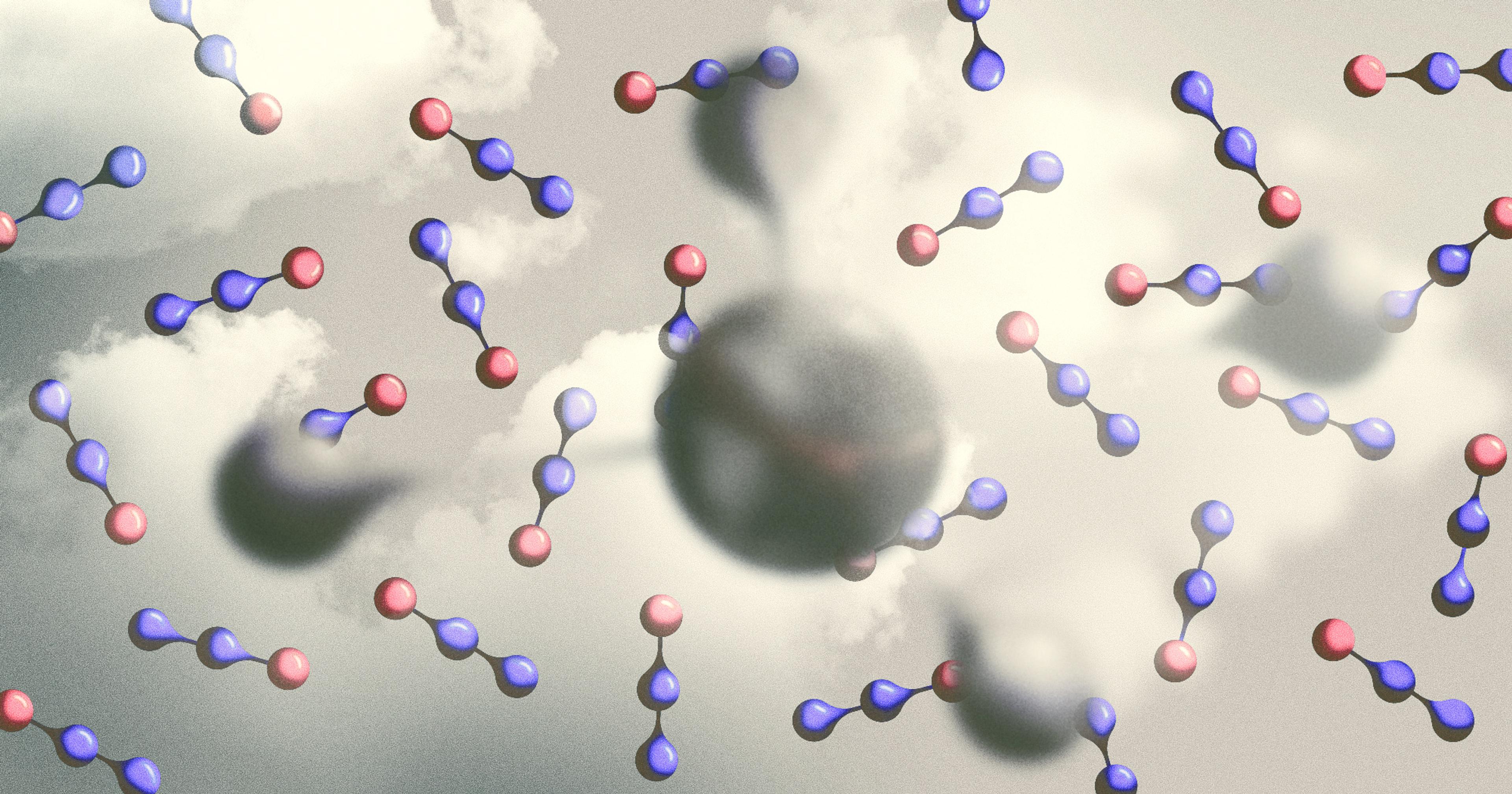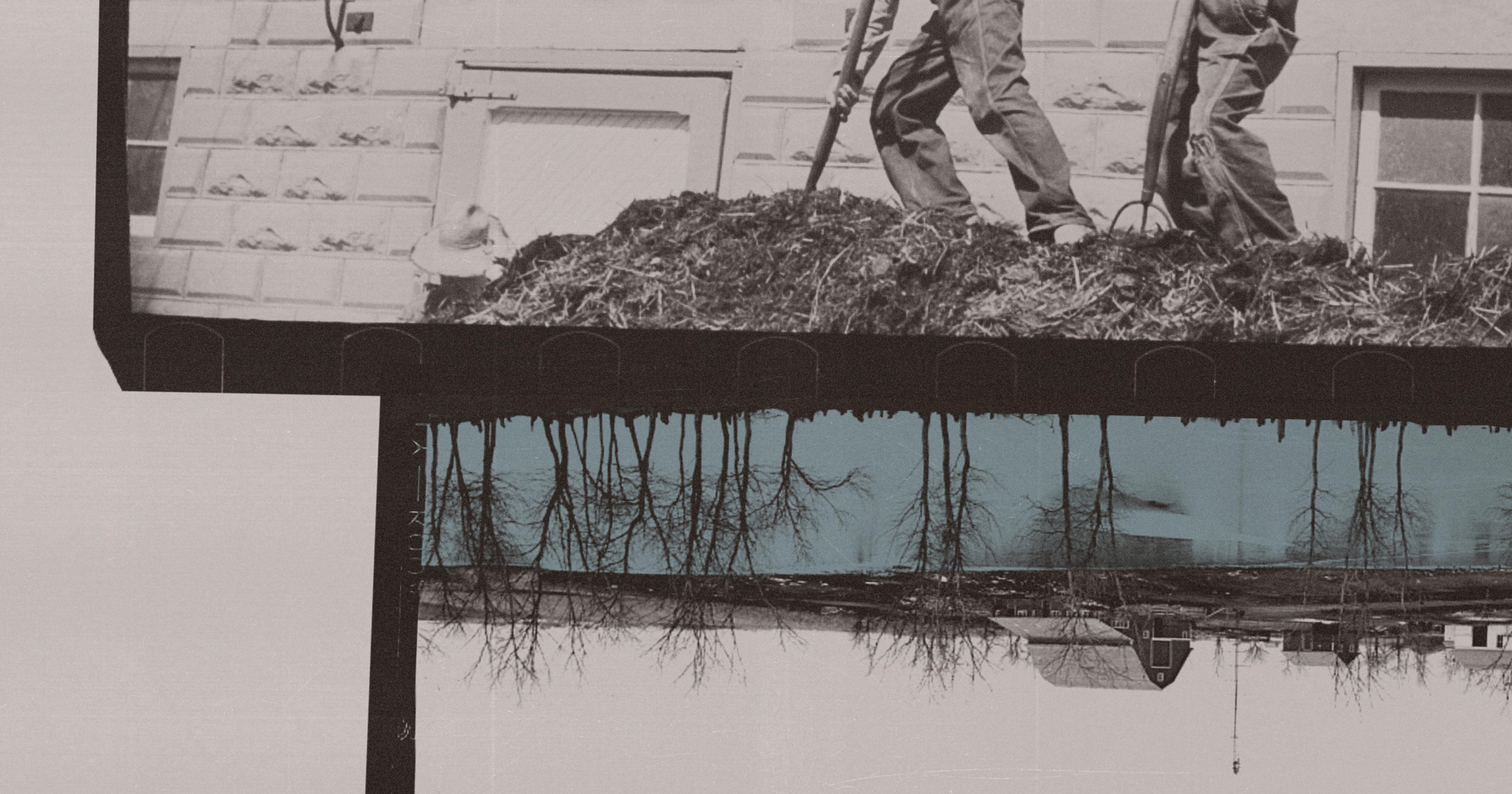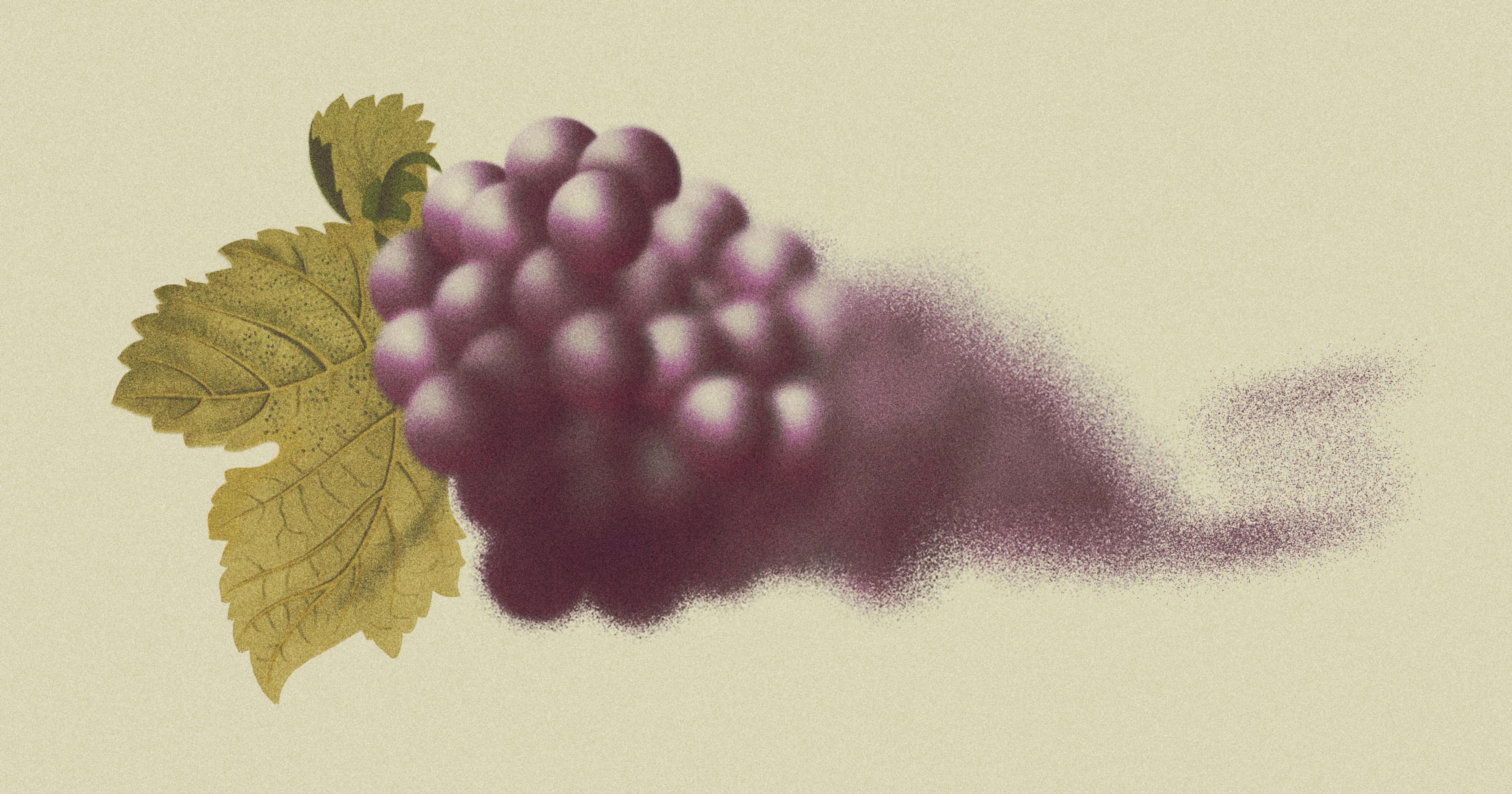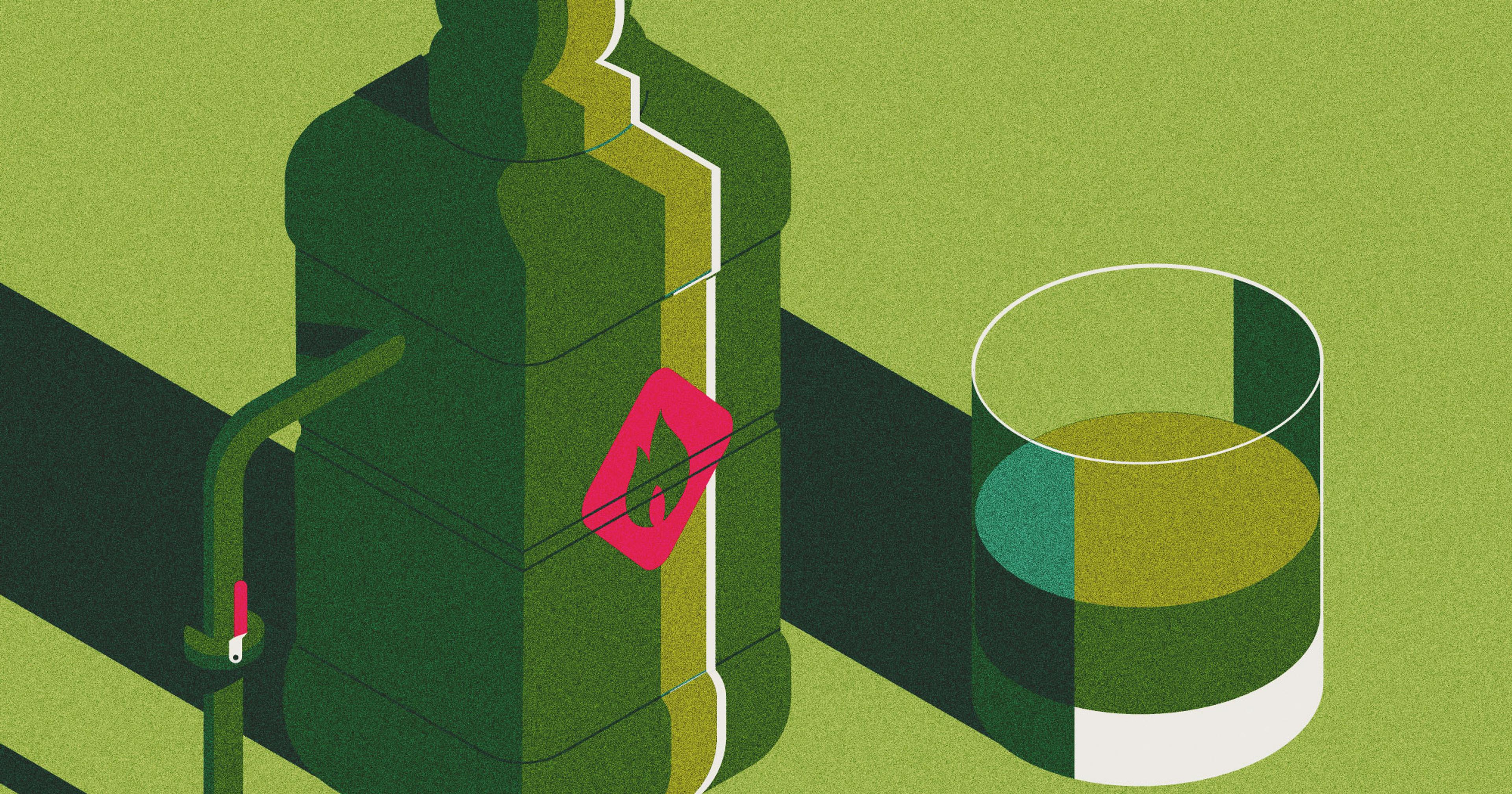Some strategies to lower methane emissions can unleash nitrous oxide — a significantly more powerful gas from the same bacteria.
For over half a century, the world has worried about carbon dioxide burning a hole in Earth’s atmosphere. More recently, attention turned to methane, the gas best known as being burped from cows.
Now, another greenhouse gas has scientists worried: nitrous oxide. Casually referred to as laughing gas in the dentist’s office, to climate scientists it’s a global threat, clocking in at 300 times the global warming potential of carbon dioxide and 12 times that of methane.
Further, it turns out that our well-intentioned efforts to tackle methane may be inadvertently increasing nitrous oxide emissions.
Both methane and nitrous oxide are emitted from microbes, not released into the atmosphere from fossil fuels like carbon dioxide. The tiny gas-producing bugs sit at the intersection of water, earth, and air, according to Lisa Stein, professor of climate change microbiology at University of Alberta, Canada.
“Here, we are really talking about microbes that are distributed all over the planet, and we don’t really control them. It’s land we’re talking about, right, not driving a car or an industry,” Stein said.
How these tiny bugs eat and produce energy determines whether the two greenhouse gasses will be absorbed from the air or released into it. From rice paddies to lagoons full of animal waste, bacteria-producing methane can quickly switch from making — or absorbing — methane to producing nitrous oxide if the conditions are favorable.
The two gasses — methane and nitrous oxide — need to be considered in tandem, Stein wote in a perspective piece published in Nature in June, so that efforts to mitigate methane do not inadvertently increase the emission of nitrous oxide.
While methane mitigation is now at the forefront of climate policy and monitoring, “Eyes also have to be on nitrous oxide and the concern is that we are going to miss the boat,” Stein said.
*
Rice production is a classic example of the tradeoff between methane and nitrous oxide, according to Stein. Rice is often grown in the soggy, flooded fields known as rice paddies. There, methane-producing microbes thrive on the carbon-rich soil. Around five percent of the world’s methane emissions in 2020 came from rice production.
Drying the fields at strategic stages of the rice growth cycle has emerged as a popular technique to tamp down methane emissions, a process called “alternated wetting and drying.”
But rice paddies, like most managed cropland, are flush with nitrogen from fertilizer. The nitrogen in the now-dry soil leads to a spike in nitrous oxide emissions in the days after the soil dries. Dry rice fields produced 30 to 45 times the nitrous oxide compared to flooded fields, according to a 2018 study in India, one of the world’s two largest producers of rice, along with China.
Still, the alternated wetting and drying system is recommended by the USDA’s Natural Resource NRCS for rice farmers in the Delta region of the United States to reduce methane emissions.
“Eyes also have to be on nitrous oxide and the concern is that we are going to miss the boat.”
It’s also a practical choice when surface water is scarce. The amount of water available each year decides the growing method for the field, said rice producer Jason Waller, whose farm is located in Mer Rouge, Louisiana. In addition to wet-dry cycling, the other two strategies available to rice producers in Louisiana are the traditional flooded paddy fields and growing the rice in rows.
But in rainy years, Waller floods the fields. Opening the floodgates of full canals and reservoirs avoids turning on diesel pumps to irrigate the water, which saves the farm money. It also has the added benefit of being good for the environment, Waller added.
“We do everything that we possibly can to conserve water, topsoil, air quality,” he said.
The incentive to minimize nitrous oxide emissions in rice farms is there, said Jarrod Hardke, rice extension agronomist at University of Arkansas. Nitrogen converted to nitrous oxide is fertilizer lost from the soil. “Part of sustainability has to be profitability because you’re not sustainable if you’re no longer in business,” Hardke said.
*
The tradeoffs of methane mitigation strategies, like wet-dry cycling of rice fields, are included in an ongoing global nitrous oxide assessment being carried out by the United Nations Environment Programme, said Eric Davidson, one of the assessment’s co-authors and professor of biogeochemistry at University of Maryland Center for Environmental Science.
Davidson hopes the caution to remember the other gas “isn’t used as an excuse for inertia” regarding methane mitigation.
Most methane mitigation strategies, including rice production, do take into account nitrous oxide, Davidson said. And while nitrous oxide should be included alongside methane in climate policies and monitoring efforts, Davidson hopes the other gas “isn’t used as an excuse for inertia” regarding methane mitigation.
Methane, with its uniquely short lifespan of just 10 or 12 years, has the potential to rapidly reduce temperature increases if mitigated now, he added. “The sooner that we can slow down the rate of climate change, the fewer people that will be suffering, the less adaptation we need, and the less risk of feedbacks of things like thawing permafrost that would release even more methane and receding glaciers and warming wetlands that release even more methane.”
Still, the two gasses coexist in tandem and should be regulated together, Stein said. As reward or penalty programs for greenhouse gasses are put in place, “it doesn’t make sense to attach a reward on methane and not on nitrous oxide.”
*
Some possible solutions to tamping down nitrous oxide emissions attempt to manipulate the microbes that produce the gas. Researchers in Norway discovered a strain of bacteria that contains an enzyme capable of digesting nitrous oxide, called N2O reductase. They grew large quantities of the N2O-eating bug within manure slurries gathered from waste digesters and then spread the engineered mixture onto crop fields.
Fields fertilized with manure infused with the special bacteria produced less nitrous oxide — 64 percent less in the 10 days after fertilizer application — than fields treated with regular manure.
“The net balance between production and consumption in the soil determines the amount of nitrogen oxide which is emitted to the atmosphere,” said lead investigator Lars Bakken, microbiology professor at Norwegian University of Life Sciences. The speciality bugs tip the scale in the soil by eating more nitrous oxide than their regular counterparts produce.
The results were published in Nature in May.
For now, the bacteria need to be applied to soil in wet mixtures. But a dry powder containing the live bacteria is only a few years away, Bakken said.
*
Other strategies to lower methane also lower nitrous oxide without a tradeoff — or not an obvious one.
Waste lagoons, where the solid waste that produces methane combines with the urine that produces nitrous oxide, are commonly left uncovered, Stein said. Covered lagoons are becoming more common as government agencies subsidize the installation of bioreactors that convert the trapped gasses into energy. Around 400 anaerobic digesters operate at commercial livestock farms in the United States, many in California. That said, there is significant debate about the overall effectiveness of digesters.
Additionally, measuring gas emissions is not viable — either logistically or financially — at individual dairy farms, a representative of the California Department of Food and Agriculture wrote in an email.
“Part of sustainability has to be profitability because you’re not sustainable if you’re no longer in business.”
Freshwater bodies are another large source of greenhouse gas production. Floating islands of plants, akin to artificial wetlands, are a possible way to decrease gas production in freshwater bodies impacted by agricultural runoff. Nitrogen from fertilizer that flows into reservoirs or lakes encourages algal growth at a rate that quickly outpaces the amount of oxygen in the water, called algal blooms. Once the oxygen is stripped from the water, microbes begin producing methane and nitrous oxide.
While aerating large bodies of water is impractical in most reservoirs, Stein said, artificial wetlands can help pull nutrients from the water. Stein is working with an artificial wetlands company, Floating Islands International, to test reductions in methane and nitrous oxide in impacted reservoirs in Montana.
More importantly, monitoring needs to be done at the large scale. And that will only happen, Stein said, with regulation. “But if there’s no regulation on greenhouse gasses, there’s no reason to spend the money and the effort to do the measurement, because, when you measure it then you have to mitigate it.”











